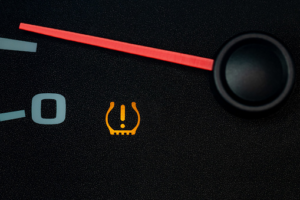Tire pressure monitoring systems (TPMS) are an essential safety feature in modern buses, helping drivers maintain proper tire pressure and prevent potential tire failures. Two main types of TPMS sensors for buses are direct and indirect.
Both types of sensors work with a TPMS control module and a display unit to alert the driver when a tire\’s pressure is too low or too high. Understanding the differences between direct and indirect TPMS sensors can help bus operators make informed decisions about which system is accurate for their needs, taking into account factors such as accuracy, reliability, and cost.
Here are all the details about these two bus TPMS sensors\’ types and how these can impact bus performance.
Choosing A Bus TPMS Sensor: Direct vs Indirect

In the case of buses, both direct and indirect TPMS sensors are functional. The choice between direct and indirect TPMS sensors will depend on the specific needs and requirements of the bus operator.
For instance, large buses for heavy-duty applications will require a direct TPMS sensor to provide more accurate and reliable pressure readings. However, indirect TPMS sensors may be sufficient for smaller buses or primarily for passenger transport.
Let’s go through a detailed explanation of both types of bus TPMS sensors.
Direct TPMS Sensors For Buses

Direct TPMS sensors for buses work by placing a pressure sensor in each tire. These sensors can detect the tire pressure and transmit that information wirelessly to the TPMS system.
The system then alerts the driver if the tire pressure drops below the bus manufacturer’s recommendations. Direct TPMS sensors are more accurate than indirect TPMS sensors but can be more expensive to install and maintain.
Here are a few specifications to note when buying a direct bus TPMS sensor:
| Specification | Description |
| Type of Sensor | Direct, using pressure sensors mounted on each tire |
| Pressure Accuracy | ±1 psi |
| Temperature Range | -40°F to 257°F (-40°C to 125°C) |
| Operating Voltage | 12V or 24V DC |
| Display Type | Dashboard warning light or message |
| Communication | Wireless communication between TPMS module and vehicle system |
| System Components | TPMS module, pressure sensors, display unit |
| Installation | Professional installation required |
| Maintenance | Battery replacement every 5-10 years |
| Battery Life | 5-10 years depending on usage and environment |
| Cost | Typically more expensive than indirect TPMS systems |
The capability of measuring the tire pressure to an accuracy of ±1 psi makes direct TPMS sensors the preferred choice for heavy-duty buses or those that operate in challenging environments. Direct TPMS sensors have two categories:
Valve Stem-Mounted Bus TPMS Sensors
These sensors are mounted on the tire valve stem and are the most common direct TPMS sensor used in buses. They are easy to install and require minimal maintenance.
Strap-Mounted Bus TPMS Sensors
These sensors are mounted around the tire circumference and require more installation time and effort than valve stem-mounted sensors. However, they offer more accurate readings and are less susceptible to damage from road hazards.
Indirect TPMS Sensors For Buses

Indirect TPMS sensors for buses work by using the vehicle\’s anti-lock brake system (ABS) sensors to monitor the rotational speed of the wheels. When a tire loses pressure, its diameter decreases, and the rotational speed of that tire changes.
The ABS sensors detect this change and send a signal to the TPMS system, which then alerts the driver through a warning light or a message on the dashboard. Indirect TPMS sensors are less expensive than direct TPMS sensors because they do not require individual pressure sensors installed in each tire.
They also require less maintenance, as they do not have batteries or electronic components that need replacement. However, indirect TPMS sensors are less accurate than direct TPMS sensors and may not detect pressure changes as quickly or reliably.
Here are a few specifications of the indirect bus TPMS sensors:
| Specification | Description |
| Type of Sensor | Indirect, using ABS wheel speed sensors |
| Pressure Accuracy | ±2 psi |
| Temperature Range | -40°F to 257°F (-40°C to 125°C) |
| Operating Voltage | 12V or 24V DC |
| Display Type | Dashboard warning light or message |
| Communication | Wireless communication between TPMS module and vehicle system |
| System Components | TPMS module, ABS sensors, display unit |
| Installation | Professional installation required |
| Maintenance | Minimal maintenance required |
| Battery Life | N/A (no batteries in sensors) |
| Cost | Typically less expensive than direct TPMS systems |
That concludes our guide to the two types of bus TPMS sensors. Remember the specifications of the bus TPMS sensors and check the compatibility with the bus fleet.
Keep following the Porcsi news to learn more about the bus TPMS sensors, their types, and advantages.
